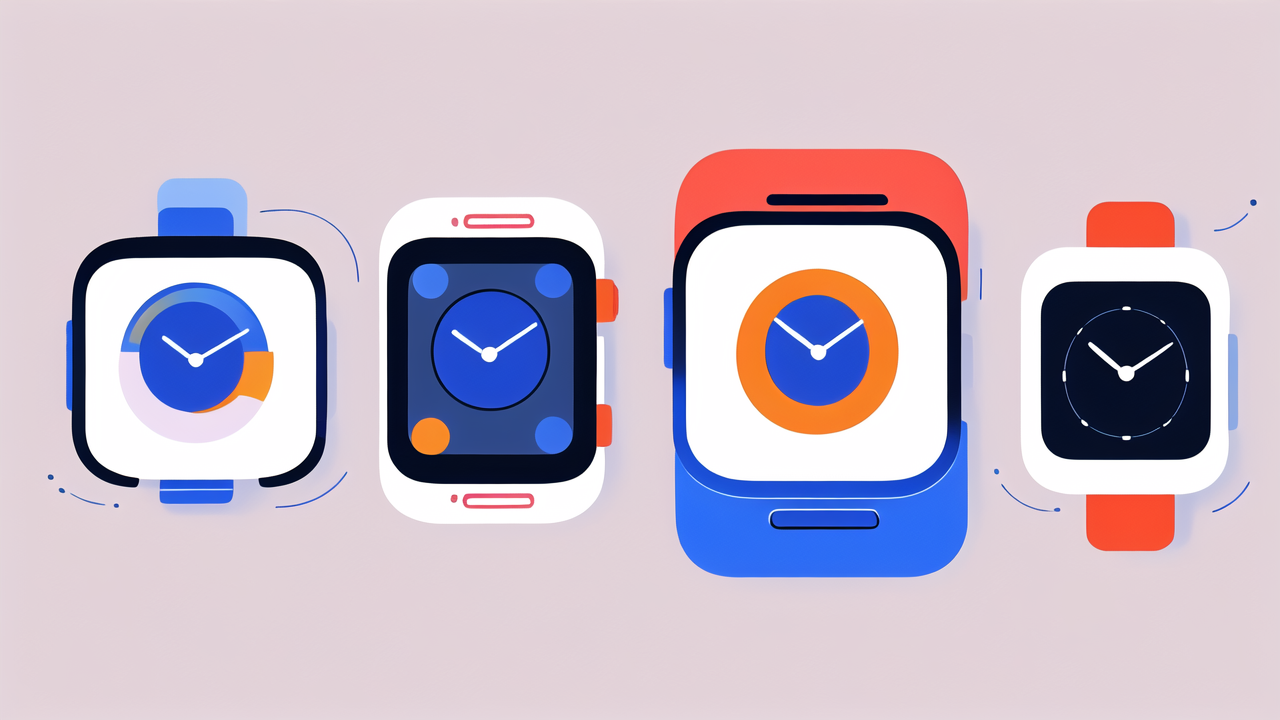Understanding the Evolution of Smartwatch Technology
The Origins of Wearable Tech
The concept of wearable technology began long before the smartwatches we know today were envisioned. Initially, wearable tech stemmed from the desire to enhance personal productivity and access information seamlessly. In the 1970s, calculator watches introduced the public to the concept of having digital tools on their wrist, a precursor to more advanced functionalities found in today's smartwatches. These early devices set the stage by proving that it was possible to wear compact technology for everyday use. The evolution continued into the 1980s and 1990s as tech companies experimented with various forms of personal tech that could be integrated into daily life, laying the groundwork for the sophisticated smartwatches we see today.

Milestones in Smartwatch Development
The smartwatch landscape has seen remarkable transformations over the years, evolving from simple time-telling gadgets to complex, multi-functional devices. A pivotal milestone was the launch of the Pebble smartwatch in 2012, which set a precedent for future wearables by offering apps and notifications. This advancement spurred industry giants like Samsung and Apple to enter the space, culminating in the release of the Samsung Gear series and the Apple Watch. Each new model introduced brought with it a host of upgrades, such as voice commands, readouts of text messages, and, critically, fitness tracking abilities. Smartwatches have also inched towards independence from smartphones, with inclusion of cellular connectivity. The introduction of contactless payments via wearable devices further melded convenience with technology. These milestones not only reflect the journey of the smartwatch but also highlight the expanding capabilities and potential of wearable tech within the consumer electronics landscape.
Key Features of Modern Smartwatches
Health and Activity Tracking Capabilities
Modern smartwatches are equipped with various health and activity tracking capabilities that cater to a wide range of fitness and wellness needs. These devices can monitor heart rate, count steps, calculate calories burned, and even track sleep patterns. Some advanced models also feature GPS tracking for runners and cyclists, as well as the ability to monitor specific exercises like swimming or yoga. Additionally, these smartwatches provide personalized insights and fitness coaching, encouraging users to achieve their health goals effectively.
Connectivity and Communication Enhancements
Modern smartwatches go far beyond mere timekeeping. A significant advancement is in their connectivity and communication features. They now act as an extension of our smartphones, allowing users to answer calls, reply to texts, and receive notifications right on their wrist. They also support wireless technologies like Bluetooth and Wi-Fi, which enables them to connect with a range of devices from headphones to vehicle systems. Moreover, some models come with built-in LTE connectivity, so they can function independently of a phone, providing freedom to stay connected on the go. This seamless integration into our daily lives signifies how integral smartwatches have become in the realms of both personal and professional communication.
Payment and Security Advancements
Modern smartwatches have revolutionized the way we handle transactions and maintain security. With the integration of payment capabilities, users can now leave their wallets at home and make purchases directly from their wrist. Services like Apple Pay, Samsung Pay, and Google Pay are commonly supported, providing a convenient and contactless way to pay. Additionally, these timepieces have enhanced security features, such as encryption and tokenization, to ensure that payment information remains protected. Biometric authentication, including fingerprint scans and facial recognition, offers an extra layer of security, reassuring users that their financial data is safe. Another advancement is the ability to lock and unlock doors or log into devices, merging security with the ease of a wearable device. These developments have not only added convenience but also improved the safety and privacy of personal data.
Comparing Popular Smartwatch Brands and Models
Market Leaders and Innovators
The smartwatch market is dominated by a few key players who have continuously innovated and set trends in wearable technology. These market leaders include Apple, Samsung, and Garmin, among others. Apple's Apple Watch series is renowned for its integration with iOS and health-focused features. Samsung's Galaxy Watch lineup offers seamless connectivity with Android devices and has expanded its features to include blood pressure monitoring and ECG. Garmin specializes in smartwatches with advanced GPS functions, catering to outdoor and fitness enthusiasts. The competition between these innovators pushes the boundaries of what's possible with wearable tech, making smartwatches not only a tool for fitness tracking but an essential part of digital life.
Feature Comparison: From Budget-Friendly to Premium Models
When shopping for a smartwatch, consumers often compare features across a range of budget-friendly and premium models. Inexpensive devices typically offer basic functionalities such as step counting, sleep monitoring, and notifications. As we move up the price scale, features become more advanced with high-resolution displays, built-in GPS, and cellular connectivity. Luxury models may boast bespoke designs, exclusive materials, and extended battery life. For example, a budget smartwatch might have a simple heart rate monitor, while a high-end model could offer ECG functionality. Brands also differentiate with unique software capabilities, app ecosystems, and compatibility with other smart devices. Therefore, finding the right smartwatch hinges on understanding individual needs and the specific perks each model can provide.
The Intersection of Fashion and Function
Design Trends in Smartwatch Aesthetics
Smartwatches have evolved to be as much about style as they are about technology. With a range of materials, from classy metals to versatile silicones, users can find a look to match any occasion. The trend leans towards thinner profiles, making them less obtrusive and more like traditional watches. Customizable watch faces and interchangeable straps have become a standard, allowing wearers to personalize their devices. High-resolution displays with vibrant colors make the smartwatch a small canvas for expressing personal style. Brands have also collaborated with fashion designers to create limited-edition models, bringing a blend of haute couture to wearable tech. These design choices are not just about aesthetics; they offer comfort and durability, ensuring smartwatches fit seamlessly into everyday fashion.
Balancing Style with Practicality
Smartwatches today aren't just about functionality; their design also plays a crucial role in user adoption. Manufacturers strive to offer devices that are not only technologically advanced but also stylish and suitable for various social settings. This balance is key to attracting a broader audience, making these devices flexible additions to personal style across different environments, from formal gatherings to casual outings. For instance, many models now come with interchangeable straps and customizable watch faces, allowing users to personalize their device to match their outfit or mood, seamlessly integrating high-tech with high-fashion.
The Role of Smartwatches in Health and Fitness
From Heart Rate Monitoring to Sleep Tracking
Smartwatches have become integral in monitoring personal health and fitness. They go beyond simple time-keeping devices to pack in sophisticated sensors that measure heart rate with precision. These devices now possess the ability to track your cardiovascular health on the go, allowing you to stay updated on your heart's condition throughout the day. Moreover, they have revolutionized sleep tracking. With advanced accelerometers and gyroscopes, they can monitor your sleep patterns, providing insights into sleep duration, quality, and stages. This data helps users to better understand their rest patterns and make necessary lifestyle adjustments for improved sleep and overall health.
Smartwatches as Tools for Health Data and Research
Smartwatches have evolved into sophisticated health data monitors, playing a crucial role in both personal wellness and broader medical research. These devices continuously collect a wide range of health metrics such as heart rate, blood oxygen levels, and sleep patterns. This information is not only beneficial for individual health monitoring but is also valuable for researchers. By aggregating data from numerous users, they can identify trends and potential public health issues. Furthermore, some smartwatches are equipped with advanced sensors that can detect irregular heart rhythms or falls, triggering alerts that can be vital in urgent health situations. This dual capability of offering immediate personal health insights while contributing to larger health studies underscores the indispensable role of smartwatches in modern health management and medical research.
Connectivity and the Smart Ecosystem
How Smartwatches Integrate with Other Devices and Services
Smartwatches have become central to the smart ecosystem, creating a web of connectivity that enhances our daily lives. They seamlessly integrate with a multitude of devices and services, turning the concept of a 'smart life' into a reality. This impressive level of integration allows users to receive notifications from their smartphones, control smart home devices such as lights and thermostats, and even summon voice assistants with a simple voice command or tap on the wrist. Services like streaming music, navigating with GPS, and checking weather updates are effortlessly accessible via the smartwatch interface. User-friendly apps make the experience personalized, offering convenience right at one's fingertips. Moreover, the synchronization with smartphones enables the smartwatch to act as a secondary screen, ensuring that users never miss important calls or messages even when their phones are out of reach. By serving as a conduit for both information and actions between various smart devices, smartwatches are solidifying their place as an indispensable part of the connected technology ecosystem.
The Future of Seamless Connectivity
The future of smartwatch connectivity promises an ecosystem where devices interact seamlessly with each other and external services. As the technology advances, users can look forward to more intuitive interactions between their smartwatches, smartphones, and home automation systems. The integration of AI and machine learning will likely advance, allowing smartwatches to predict user needs and manage tasks proactively, such as adjusting home temperatures, scheduling appointments, or suggesting health-related actions based on real-time data. This interconnectedness will not only enhance user convenience but also pave the way for new applications in health management, personal productivity, and more. The goal is a truly connected experience, where the smartwatch is a central hub in a vast network of personalized services and devices.
Consumer Behavior and Market Trends
Understanding the Demographics of Smartwatch Users
The smartwatch user base is diverse, stretching across various age groups, professions, and lifestyles. Research shows that young adults, particularly those between the ages of 18 to 34, tend to adopt smartwatch technology more quickly, valuing the convenience and connectivity these devices offer. However, older generations are also catching on, finding the health monitoring features very beneficial. Professionals who place value on staying connected for work purposes, as well as fitness enthusiasts who track their physical activities, represent significant segments of the smartwatch market. Moreover, as smartwatches become more fashion-forward, there's growing appeal to the style-conscious consumer. Each demographic has distinct preferences and usage patterns, influencing market trends and driving innovation in the wearable tech space.
Forecasting the Growth of Wearable Tech in the US
The American wearable tech industry shows signs of an upward trajectory for the years to come. Experts project significant growth driven by advancements in technology and increasing consumer interest. Factors such as the ongoing innovation in health and fitness features, integration with the Internet of Things (IoT), and the rise of personalized smart fashion accessories contribute to this rise. Research also suggests a wider acceptance of wearable devices among various age groups, especially as smartwatches become more user-friendly and packed with features that appeal to not just tech enthusiasts but also the health-conscious and fashion-forward individuals. As smart devices continue to play a pivotal role in daily life, their convenience and functionality will likely continue to spur demand and growth in the US market.
Innovations on the Horizon
Emerging Technologies in Smartwatch Development
In the realm of smartwatch development, emerging technologies are setting the stage for a revolution. These advancements promise to further blur the lines between digital and physical worlds. New developments like augmented reality (AR) are starting to find their way into smartwatch features, enabling users to interact with virtual content overlaid on the real world straight from their wrist. Likewise, improvements in biometric sensing are expected to monitor health metrics with astonishing precision. Additionally, advances in battery technology are crucial. They aim to extend the wearables' life between charges, a significant challenge in past designs. Such innovations hint at smartwatches becoming even more integrated into our daily lives, transforming them from mere gadgets to indispensable personal assistants.
Predicting the Next Big Features in Wearable Tech
As smartwatch technology marches forward, we're on the cusp of new and exciting advancements. Predicting the future is often a gamble, but certain trends hint at what's next for wearable tech. It's likely that future smartwatches will feature more advanced biometric sensors, offering deeper insights into our health beyond heart rate and steps taken. Expect non-invasive blood glucose monitoring, making life easier for diabetics, and stress detection through skin conductance. Integration with emerging 5G networks will enhance connectivity, leading to faster data sync and more reliable communication. Enhanced battery life and energy-efficient designs will be key to accommodating these power-hungry features. Another anticipated feature is more sophisticated AI, providing personalized fitness coaching and daily schedule assistance. Undoubtedly, the next big features in wearable tech will draw us closer to a future where our watches know more about us than we do ourselves.
Challenges and Considerations for the Future
Addressing Privacy and Security Concerns
As smartwatches grow more advanced, privacy and security are top concerns. These devices often hold sensitive data, like health info and payment details. To protect users, makers must focus on safeguards like encryption and secure connections. It's also essential for users to stay updated on privacy settings and be aware of the permissions they grant to apps. Ongoing education and transparent policies from brands can help ensure trust and safety in the evolving wearable tech landscape.
Balancing Performance with Battery Life
As the smartwatch technology advances, users experience an array of features packed into these wearable devices. However, one of the key challenges manufacturers face is balancing performance with battery life. High-end functions like GPS, music streaming, and continuous health tracking put a strain on battery longevity. Engineers are tasked with finding efficient ways to power these features while keeping devices slim and light. Enhanced battery technology, such as solid-state and advanced lithium-ion batteries, is being explored. Additionally, software optimizations, energy-saving modes, and wireless charging possibilities are developed to address this issue. These solutions aim to extend the time between charges, ensuring users can enjoy the full potential of their smartwatches without frequent power interruptions.




Leave a comment
This site is protected by hCaptcha and the hCaptcha Privacy Policy and Terms of Service apply.